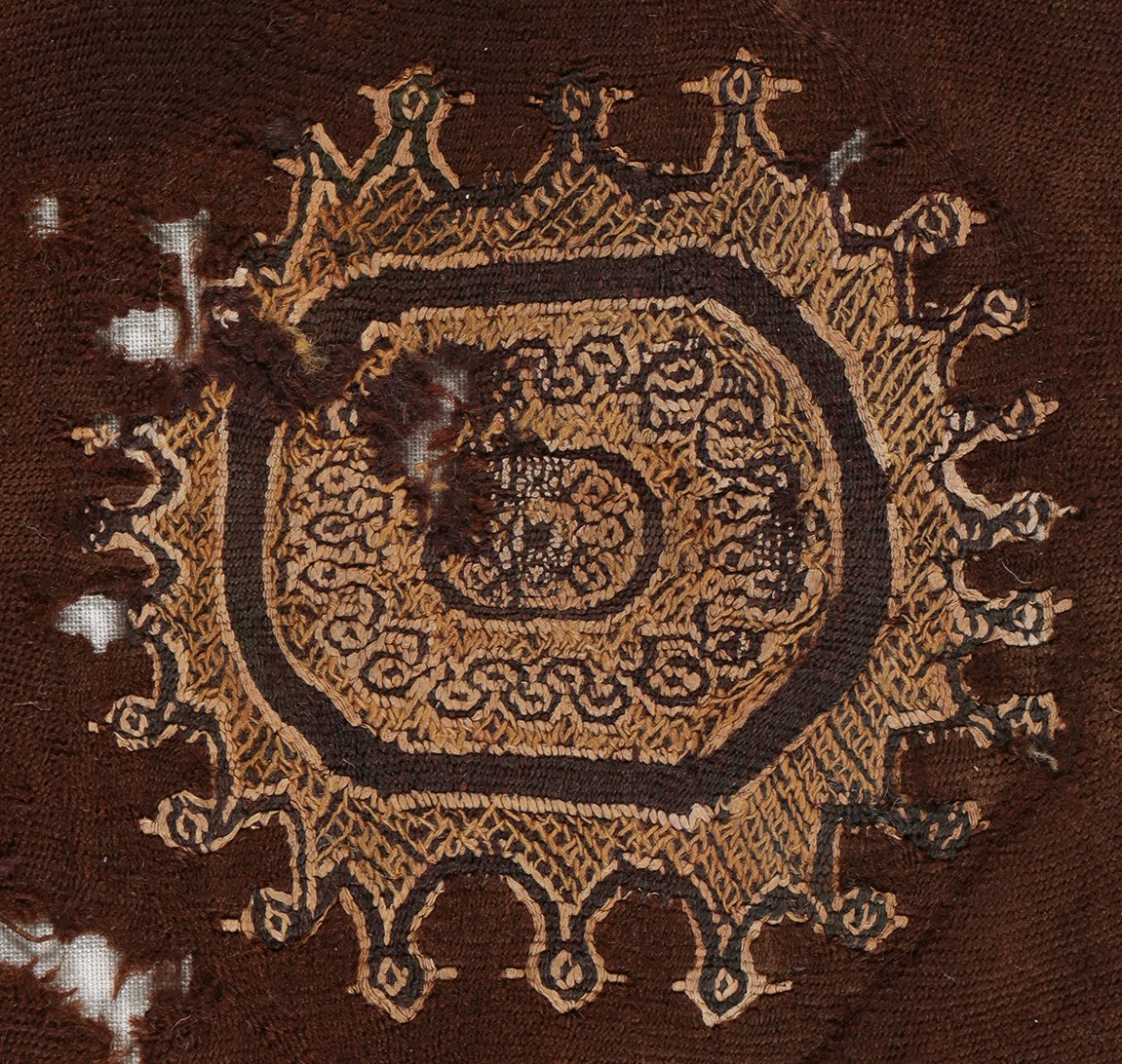Although this fragment of brown wool has been cut on three sides, it has retained its cabled edging, parallel to which is a strip of fine red wool herringbone and a broader red band. Above these is an orbiculus, for which the centre and edges of the design were made in flying thread.
Origin:
Egypt
Date:
6th - 9th century
Material:
Linen and wool
Dimensions:
Warp: 24.5 cm, weft: 24.5 cm
Comparisons:
Coll. J-F Bouvier, inv. S 406.
Provenance:
Collection Coptic textiles Fill-Trevisiol: donation
Location:
Musée royal de Mariemont
Woollen cloth with decorative motif in linen thread
I. Ground weave
Warp:
brown wool S: 9/cm
Weft:
brown wool S: 20/cm; red wool S: 36/cm
Weave:
weft-faced tabby
Other features:
finishing border on one side of the weave; at 2cm of the finishing border: 4-2 countered twining with 3 yarns: red woolS3Z
II. Flying thread brocading
Orbiculus: lazy lines mark that the orbiculus is separately woven into the ground weave
Warp:
brown wool S: 9/cm
Weft:
brown wool S: 22/cm
Weave:
weft-faced tabby
Special techniques:
flying thread brocading with yellow wool S; outlining figures and circles: linen S

